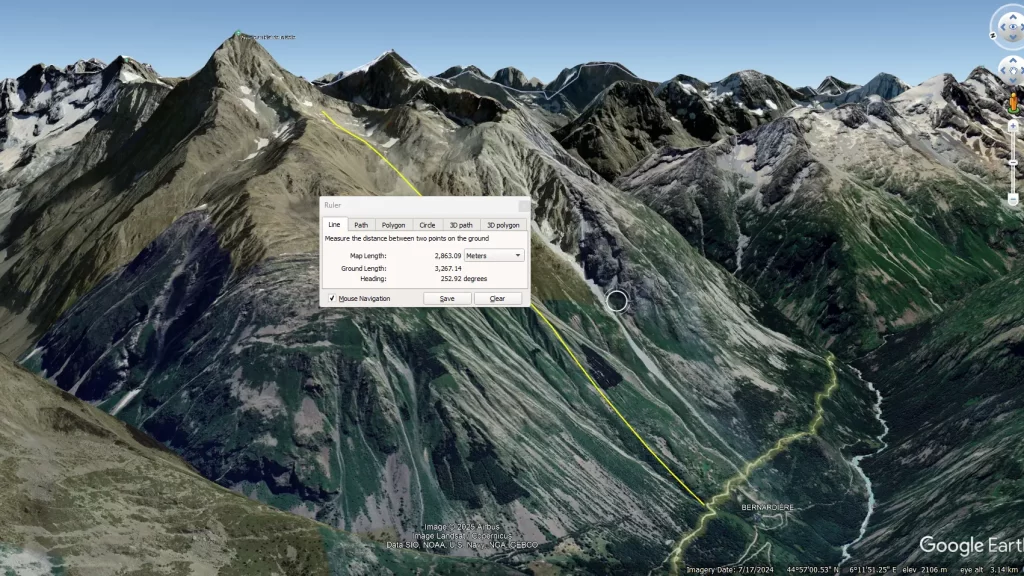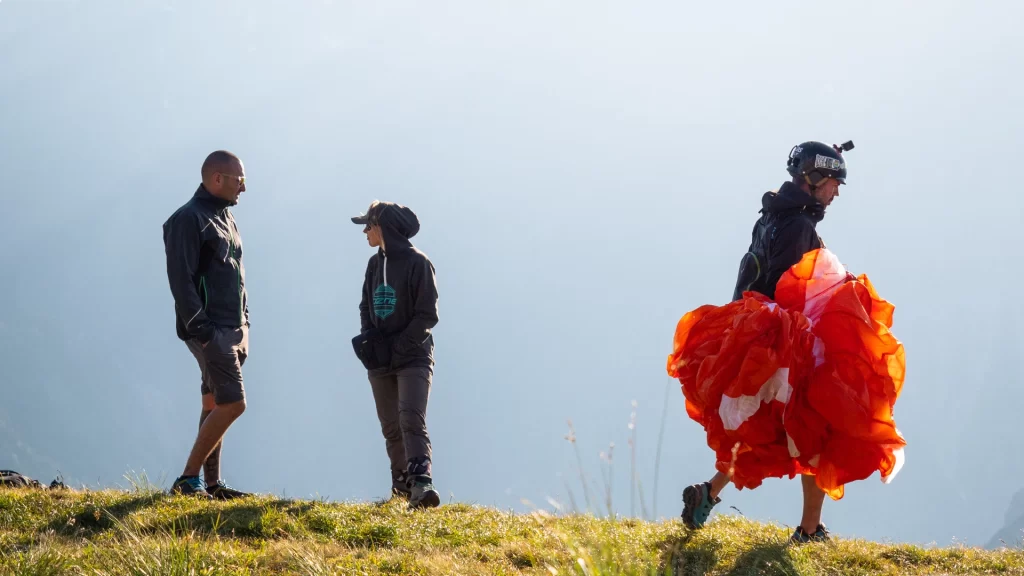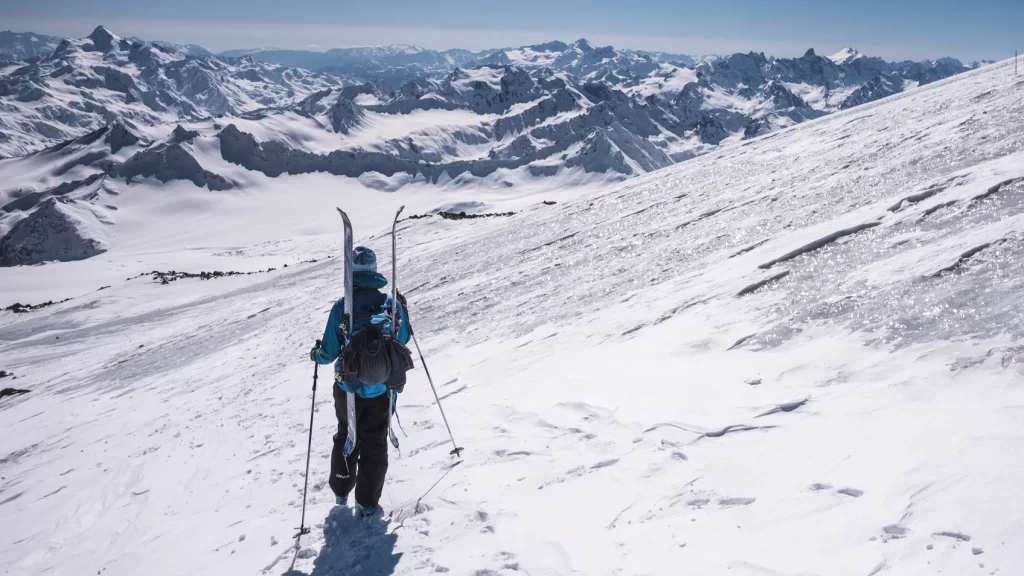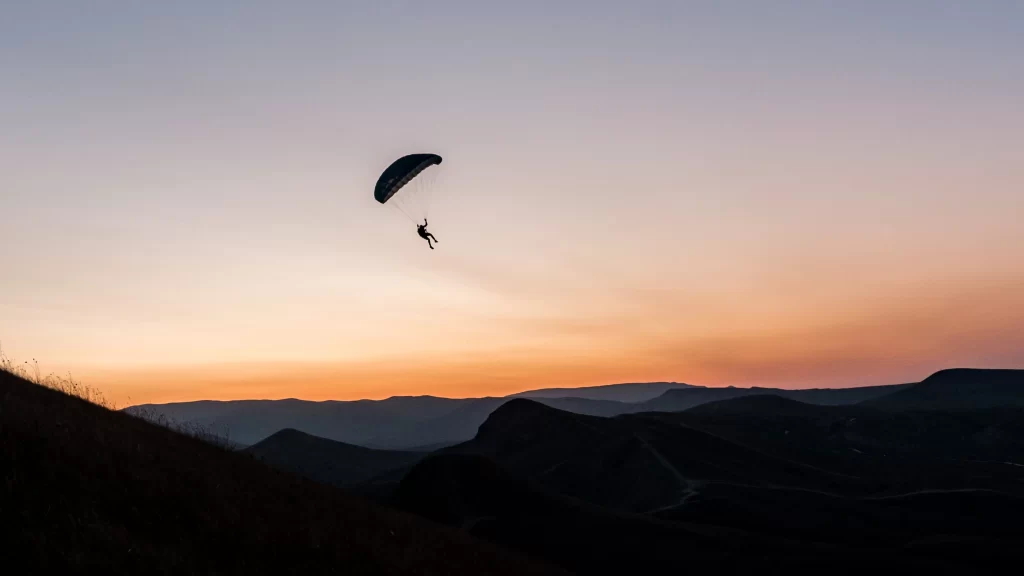Your cart is currently empty!
Preparation in speedflying
Today we’re diving into a bit of theory of speedflying preparation—a small but important lesson for any pilot planning to fly on a new location. Whether you spotted a promising mountain in a photo or during a weekend hike, this guide will help you prepare for that first flight safely and confidently.
Main steps of speedflying preparation
Step 1 Study the Line on the Map
Before you even pack your wing, open Google Earth or Fatmap. Trace the line you want to fly. Is the glide ratio realistic for your wing? Are there any flat sections where you can stuck? You should already know your speedwing glide ratio in different conditions. For the classical speedwings I would say that glide ratio 4 is the maximum. For small aggressive wings we are searching for 3 or steeper. Also, look for launch and landing zones (main and reserve). The satellite pictures are quiet detailed nowadays and with some experience you will be able to see what you need.
Step 2 Analyze the Orientation
How is the line oriented? Think about how the sun and thermal cycles will work on that side of the mountain. Check how the main valley is oriented and whether side valleys could influence weather or wind.

Step 3 Talk to local pilots
If the line looks promising, reach out to locals. This is especially important if you’re flying at a ski resort—many have rules, agreements, or restricted areas you must respect to keep the place open for everyone. Locals can also tell you about weather tricks, rotor zones, or places that don’t look dangerous on the map—but are.
Step 4 Walk the Line (if possible)
After you got all the info you can, try to walk the line or at least visit the landing zone.
Asking someone to guide you mid-air on your first flight is a big no-no. They’re flying too, and if something goes wrong, there’s no plan B. Know where the landing is, and scout out backup landings. If locals aren’t available, spend a good-weather day near the landing. Watch how the wind flows, especially if the terrain is complex: narrow gorges, rivers, glacier fields, lakes, or crossing valleys can all affect air movement.
Step 5 Choose the right time of day
For a new or technical spot, mornings are your friend. If something goes wrong, you’ll still have daylight for a rescue. In some countries, helicopters don’t fly at night—or don’t exist at all. Daylight matters. Some of the big lines have the best time for flying. Not too early (because of the catabatic winds) and not too late (because of the thermals).
Step 6 Be ready for emergency
Find the local rescue number. Sometimes a direct number is faster than 112. Learn the names of the mountains and landmarks. Know north, south, etc. It helps you communicate clearly in emergencies. Check for emergency trails and roads that intersect your route. You might need them.

Step 7 Are You Flying Solo or With Friends?
If you’re flying alone, you need ground support. That could be your wife in a hotel with a map and your emergency plan. Agree to check in before launch and after landing.
We recommend:
Use a radio as your main device. It’s fast, simple, and doesn’t crash like phones.
Use your phone as a backup.
Check mobile coverage in the area.
Buy a local SIM card or activate a roaming plan.
Consider a GPS tracker.
If you’re flying with friends:
Every pilot is part of the ground support team.
Know each other’s insurance, emergency contacts, and plans.
Don’t just assume someone else is watching. Be responsible for each other.
If you’re riding lifts and making many runs, take a moment to check where your buddy is—don’t leave someone stuck on the mountain. After the flight, debrief together, discuss what worked, and imagine worst-case scenarios so everyone knows what to do next time.

Step 8: Local Guidance doesn’t replace your speedflying preparation
Flying with local pilots is the easiest way to discover a new site—but don’t relax too much. For them, everything is already familiar. They might skip details because it feels obvious or they don’t want to sound preachy. Do your homework anyway!
Visit the landing the day before, not at night five minutes before your hike.
A common situation: everyone’s flown and you’re stuck on launch with a tailwind, forced to hike down alone. Be ready. Bring food, water, warm clothes, a headlamp, and know how to use GPS on your phone.

Final thoughts
This all sounds like common sense—and that’s exactly why pilots start to skip it. Don’t be that person. Don’t underestimate scouting. And don’t be afraid to look like a safety nerd—it’s much worse to fly with someone who doesn’t know where the north is.
If you want to practice all this skills with us – join our Speedflying camps. For more video content visit ProSpeedflying youtube.
Message us if you have any questions